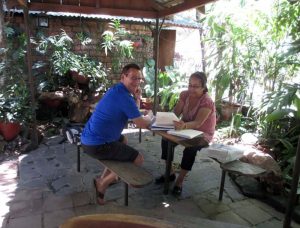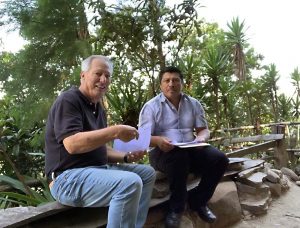Spanish is the second most widely spoken language in the world, with over 400 million speakers in 31 countries. In the US alone, over 43 million people speak Spanish as their first language. Given these numbers, it’s no wonder that many people want to learn Spanish as a second language; the ability can open a world of opportunities and adventure.

In learning Spanish, remember that each language has its own rules and quirks. For example, Spanish uses the same alphabet as English—the Latin alphabet—but there is an additional letter: ñ. Also, Spanish vowels are accented (á, é, í, ó, ú) unlike English vowels. Spanish also has more verb tenses than English.
But learning a language is not about memorizing a bunch of grammar rules.
When you begin learning Spanish, you’ll be thinking in English. This is entirely normal. You’ll need to translate everything. Later, as you become more comfortable with Spanish words and phrases, you’ll think directly in Spanish. And finally, when approaching fluency, you’ll occasionally think in Spanish and have to translate into English. That’s our goal. And it’s not as hard as it might sound.

To truly learn a language you need to live it and use it daily as your communication. That’s immersion. At Spanish School Nicaragua, we see how fast students progress with immersion. We’re totally committed to this principle and have developed our program around it. There is no faster or better way to learn Spanish than living in a Spanish-speaking country, staying with a local family, and interacting with local people.
While teaching Spanish for more than 23 years, I’ve noticed that many teachers and Spanish language schools use textbooks that teach conjugations and phrases that aren’t really used in Spanish-speaking countries. For example, many schools teach the phrase, “Yo hago la cama,” (I make the bed). However, most Latinos would struggle to understand this sentence; Are you a carpenter making a bed? They say “Yo arreglo la cama,” (I arrange the bed). Using uncommon phrases not only makes communication difficult—it makes your efforts to learn Spanish frustrating.
We teach the Spanish that is actually used every day in Latin America.